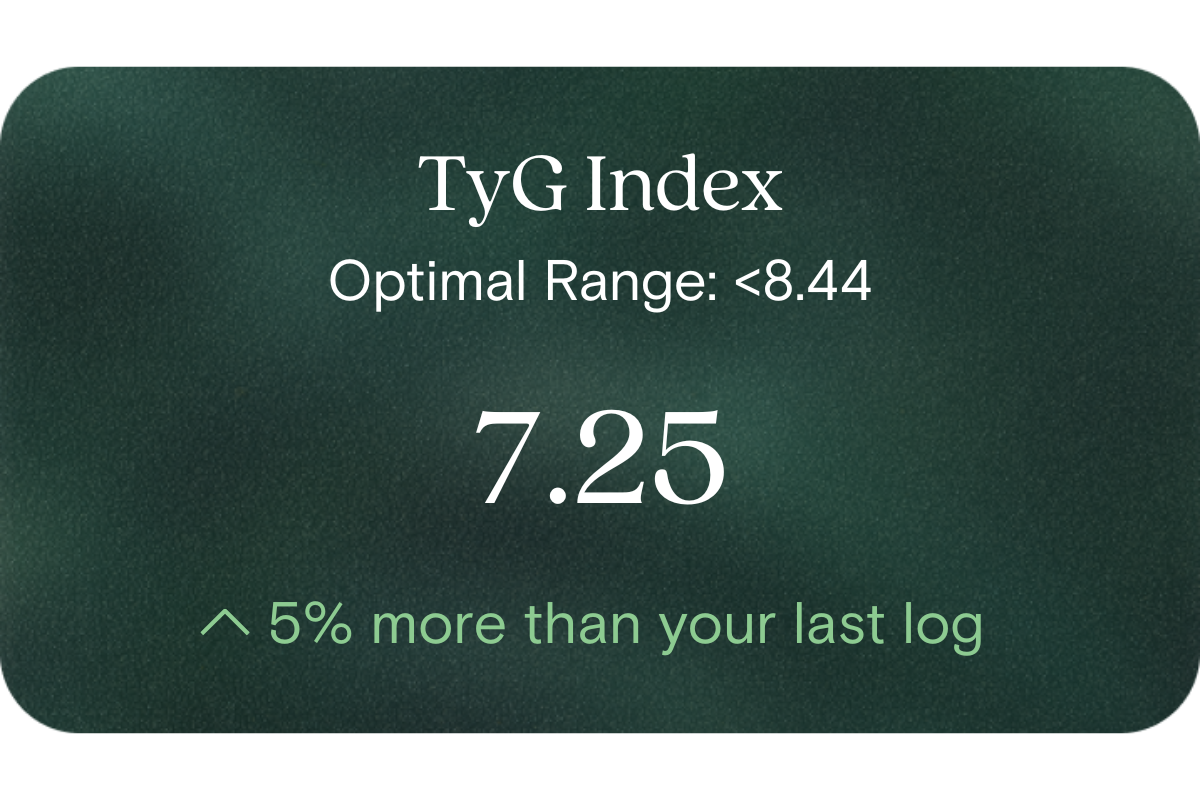What is the TyG index?
The TyG index (Triglyceride-Glucose index) is a calculated measure that combines fasting triglyceride and glucose levels to estimate how efficiently your body utilises insulin and processes energy. It provides a snapshot of overall metabolic health.
Why does it matter for long-term health and wellbeing?
Your TyG index reflects how well your body balances glucose and fat metabolism. Maintaining a healthy level supports consistent energy, efficient fuel use, and optimal cellular performance—all key factors for longevity and overall wellness.
What’s an optimal level of TyG index?
- Optimal range: <8.44
- Reference range: <8.82 (men), <8.73 (women)
Values within the optimal range indicate balanced glucose and lipid metabolism.
What influences TyG index levels?
TyG index levels can shift based on dietary patterns, physical activity, sleep quality, stress levels, and body composition. Diets high in refined carbohydrates or saturated fats, or inconsistent exercise habits, can raise the index over time.
What does it mean if TyG index is outside the optimal range?
A higher TyG index suggests that your body may be less efficient at managing glucose and lipids, which can impact your energy levels and metabolic efficiency. Tracking and adjusting your habits can help bring the index back within an optimal range.
How can I support healthy TyG index levels?
Focusing on balanced meals rich in whole foods, fibre, and unsaturated fats, along with regular movement, restorative sleep, and stress management, can all help maintain a healthy TyG index. Monitoring your progress through regular blood tests provides clear feedback on your lifestyle’s impact.
This information is provided for general health and wellness purposes only and does not replace medical advice.
References
- Australian Institute of Health and Welfare. (2024). Heart, stroke and vascular disease: Australian facts (Cat. no. CVD 92). Canberra: AIHW.
- The Royal College of Pathologists of Australasia. (2009). RCPA Manual (5th ed.). Sydney: RCPA.
- Simental-Mendía, L. E., Rodríguez-Morán, M., & Guerrero-Romero, F. (2008). The product of fasting glucose and triglycerides as a surrogate for identifying insulin resistance. Metabolic Syndrome and Related Disorders, 6(4), 299-304.
- Guerrero-Romero, F., & Simental-Mendía, L. E. (2010). The triglyceride and glucose index: a simple measure of insulin sensitivity. Journal of Clinical Endocrinology & Metabolism, 95(7), 3347-3351.




















.png)
